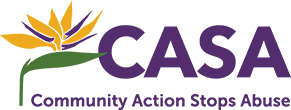Thrive
CASA launches rebrand and responds to recent domestic violence tragedies in the Tampa Bay area

A string of murder-suicides took place across the Tampa Bay area during the final week of September. The violence started in Lakewood Ranch, where husband James Bennett shot and killed his wife Silvana Bennett and their 16 year old daughter, Andrea Barberena-Rojas. James then turned the gun on himself.
On the following day in Land O’ Lakes, Kirk Keithley shot and killed his wife, Samantha Keithley, and then shot himself. Jeffrey S. Little and his wife Melissa Little’s bodies were found at Shephard’s Beach Resort in Clearwater; investigators suggested that it was a murder-suicide. The same pattern of violence carried on through the final days of September, occurring in Sun City Center, Tampa, and St. Petersburg.
Lariana Forsythe, CEO of domestic violence center CASA in St. Petersburg, argues that news sources should address the true cause of these tragic events. “Domestic violence is not reported on unless there is a gun involved, and these incidents are not even referred to as domestic violence. News sources call them murder-suicides, but domestic violence organizations can read between the lines. We need to shine a light on what domestic violence really is.”
Forsythe also explains that these tragic cases can be traced through a long history of power and control behaviors that build up, until it reaches a critical point: “A husband does not just kill his wife and himself out of nowhere.”
In order to respond to the recent domestic violence tragedies, CASA adopts a fresh logo and tagline, Stand Up to Silence. The nonprofit was previously represented by a bird of paradise flower, which “is used by domestic violence centers because they (flowers) can be signs of growth and beauty, and are strong and vibrant,” says Forsythe. “I liked the old logo, but a flower seems passive.”
CASA can now be recognized by a royal purple and grey hand. “We want to be active and supportive for survivors, and we now have a new vision for stopping domestic violence,” she explains.
The logo frames domestic violence as an issue that can be addressed by the community. For example, the purple pointer and ring finger form a “U” shape to serve as a reminder that “you have the power to stand up against domestic violence,” Forsythe says. The inner circle represents the cycle of domestic violence – children who are exposed to violence may not understand what a healthy relationship looks like, and harmful behaviors can transcend into their own future relationships. The thumb forms a “C,” representing CASA.

The rebranding launches at the onset of Domestic Violence Awareness Month, a movement created to end domestic violence against men, women, and children of all races and backgrounds. The first step in breaking the cycle of violence is being able to recognize the signs and symptoms. Abusers often alienate their partners from friends and family, and victims may wear long sleeves and turtlenecks to cover up any physical abuse. Victims may also receive a lot of phone calls from their abusers, miss a lot work or school, or be harassed by their abuser while at work.
“Victims might not reach out because they might feel ashamed or not understand why they’re being abused, because people don’t talk about domestic violence,” Forsythe says; she stresses that friends, family, and coworkers can report these signs by calling a domestic violence hotline, which can encourage a victim to reach out for help.
According to the Pinellas County fatality review team, out of 147 cases of intimate partner homicides and near fatalities, 127 cases had no contact with a certified domestic violence center. This finding reflects the stigma behind domestic violence, which is to keep it private, behind closed doors. “People may take notice of abuse, but don’t know how to solve it. People might ask, ‘why doesn’t she leave?’” Forsythe explains that it is not that simple. “Domestic violence is a very complex topic and there are many barriers that stop people from leaving. Abusers will exert violence and control to scare the victim later on in the relationship, which makes it harder for victims to leave.”
CASA is also launching Domestic Violence Awareness Training for the Workplace. Trainers will go into corporations and educate everyone on how to recognize the signs and how to approach potential victims. The program protects victims from being harassed at work and provides resources for businesses and victims. Corporations will also be informed of the economic impact of domestic violence; chronic absenteeism (mentally and physically) and hospital bills add up in severe cases of abuse. The community education and awareness manager, Gaby Lopez, can be reached at glopez@casa-stpete.org.
Despite the recent domestic violence related tragedies, Forsythe remains optimistic that community action can prevent further abuse. This can be done by speaking up: “If there are any questions, please call any organization.”


Curtis H
October 12, 2018at6:04 pm
Strong rebranding! I’m glad someone is writing about this, domestic violence is rampant.